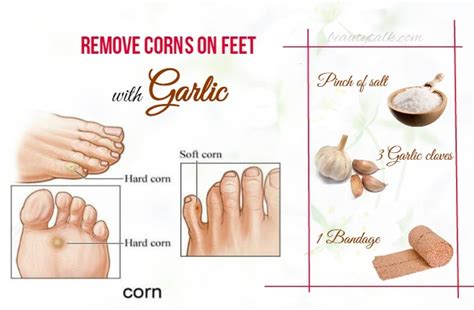How to Remove Corns on Toes: A Comprehensive Guide
Corns on toes are a common foot problem, causing pain and discomfort. This comprehensive guide will teach you how to remove corns safely and effectively, focusing on both at-home treatments and when to seek professional help.
Understanding Corns: Types and Causes
Before diving into removal methods, let's understand what corns are and why they develop.
-
Hard Corns: These are usually found on the tops or sides of toes, appearing as hard, calloused bumps. They're caused by pressure and friction from ill-fitting shoes, repetitive movements, or bone deformities.
-
Soft Corns: These occur between toes, typically where the skin is moist. They're softer and whiter than hard corns, also resulting from pressure and friction, often exacerbated by sweating.
Common Causes of Corns:
- Ill-fitting shoes: Shoes that are too tight, too narrow, or have high heels put excessive pressure on your toes, leading to corn formation.
- Repetitive activities: Activities like walking, running, or dancing can create friction and pressure, contributing to corn development.
- Bone deformities: Conditions like bunions or hammertoes can increase the likelihood of corns.
- Improper foot care: Neglecting proper foot hygiene and failing to address early signs of corn formation can exacerbate the problem.
Home Remedies for Corn Removal
Several at-home treatments can help soften and eventually remove corns. Remember, patience is key, and these methods may take time to show results.
1. Soaking and Exfoliation:
- Soak your feet: Soak your feet in warm, soapy water for 10-15 minutes to soften the corn. This makes it easier to remove dead skin.
- Exfoliate gently: Use a pumice stone or a foot file to gently rub the corn after soaking. Avoid aggressive scrubbing, which can damage healthy skin.
2. Over-the-Counter (OTC) Corn Removers:
Many OTC products contain salicylic acid, which helps break down the corn's dead skin cells. Always follow the product instructions carefully.
- Salicylic acid patches: These patches are applied directly to the corn and gradually dissolve the hardened skin.
- Salicylic acid creams or lotions: These are applied similarly to patches but may require more frequent applications.
3. Home Remedies:
While not scientifically proven, some individuals report success with these methods:
- Baking soda paste: Mix baking soda with a small amount of water to create a paste. Apply it to the corn, cover with a bandage, and leave it overnight.
- Epsom salt soaks: Adding Epsom salt to your warm foot soak may help soften the corn.
Important Note: Avoid using sharp objects like knives or razors to cut away the corn, as this can lead to infection or further injury.
When to See a Podiatrist
While home remedies can be effective for many, it's crucial to consult a podiatrist (foot doctor) in certain situations:
- Severe pain or discomfort: If the corn is extremely painful or interferes with your daily activities.
- Infection: Signs of infection, such as redness, swelling, pus, or increased pain, warrant immediate professional attention.
- Recurring corns: If corns keep reappearing despite home treatment.
- Underlying medical conditions: If you suspect an underlying medical condition might be contributing to corn formation (like diabetes).
- Inability to manage at home: If you're struggling to manage the corn effectively using home remedies.
A podiatrist can offer more advanced treatments, such as cryotherapy (freezing), surgical removal, or prescribe stronger medications.
Preventing Corns: Key Strategies
Preventing corns is often easier than treating them. Follow these tips to minimize your risk:
- Wear properly fitting shoes: Choose shoes that are comfortable and provide enough space for your toes. Avoid high heels and narrow-toed shoes.
- Use cushioning pads: Padding can reduce pressure and friction on your toes.
- Keep your feet dry and clean: This helps prevent infections and softens the skin, making it less prone to corn formation.
- Regular foot care: Regularly examine your feet for any signs of corn development.
- Moisturize your feet: Use a moisturizer to keep your feet hydrated and prevent dryness.
By understanding corns, implementing effective removal methods, and prioritizing prevention, you can maintain healthy and comfortable feet. Remember, always prioritize your foot health and seek professional help when needed.
